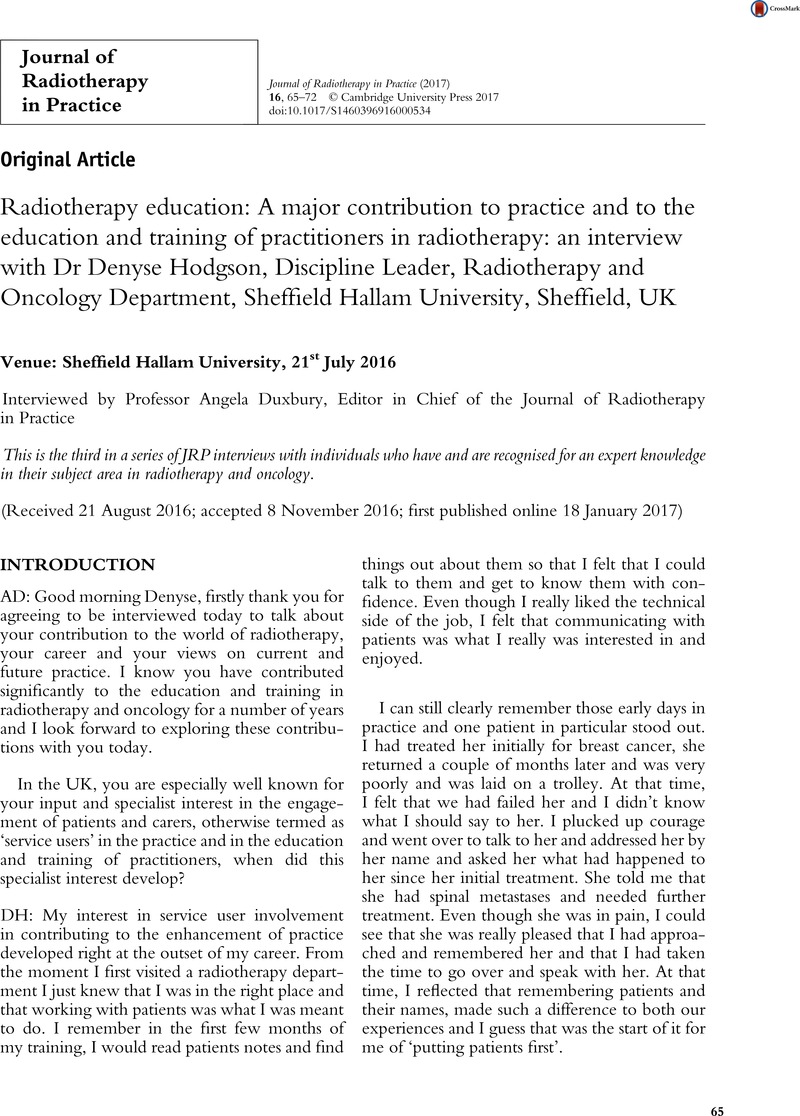No CrossRef data available.
Article contents
Radiotherapy education: A major contribution to practice and to the education and training of practitioners in radiotherapy: an interview with Dr Denyse Hodgson, Discipline Leader, Radiotherapy and Oncology Department, Sheffield Hallam University, Sheffield, UK
Published online by Cambridge University Press: 18 January 2017
Abstract

- Type
- Original Articles
- Information
- Copyright
- © Cambridge University Press 2017



